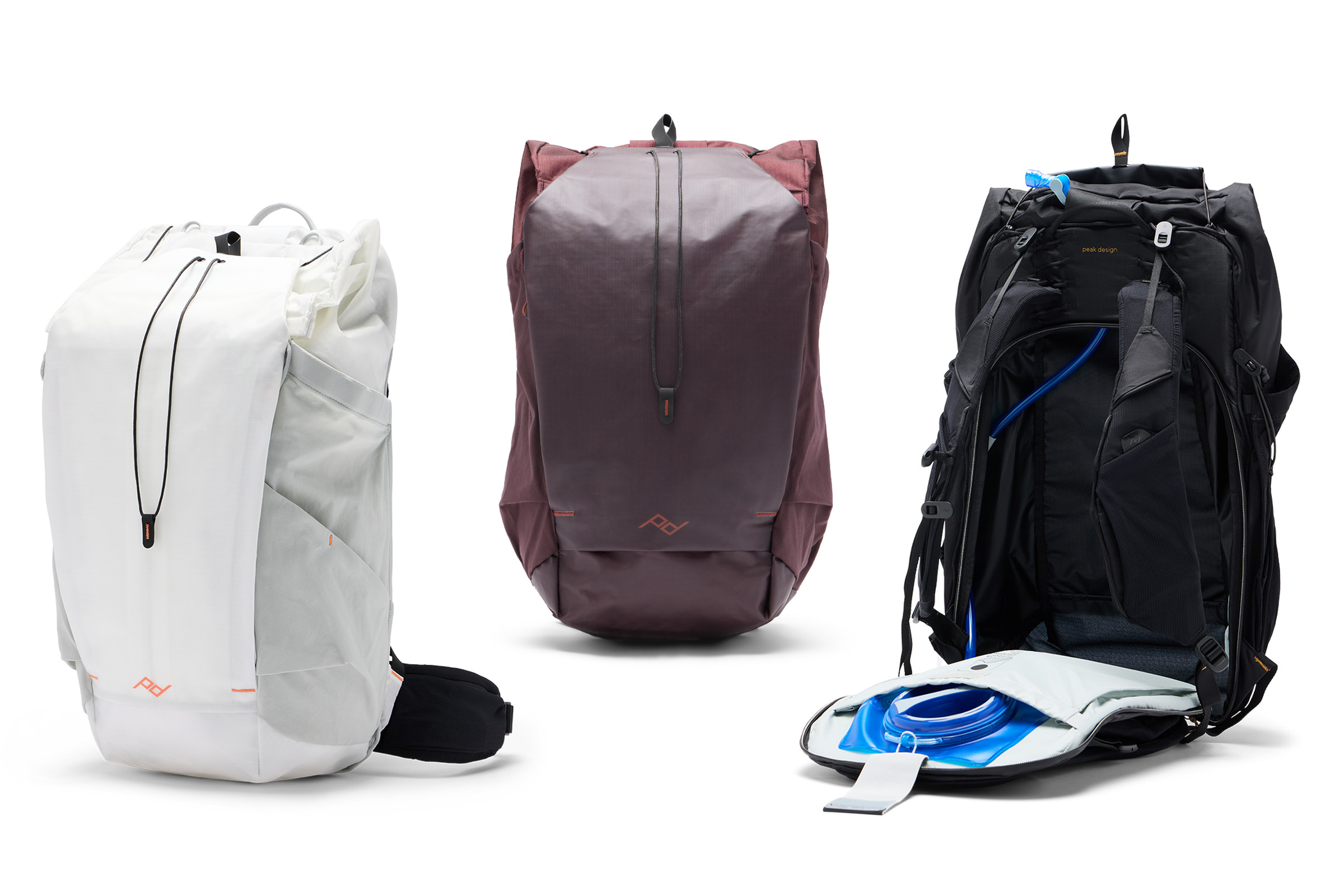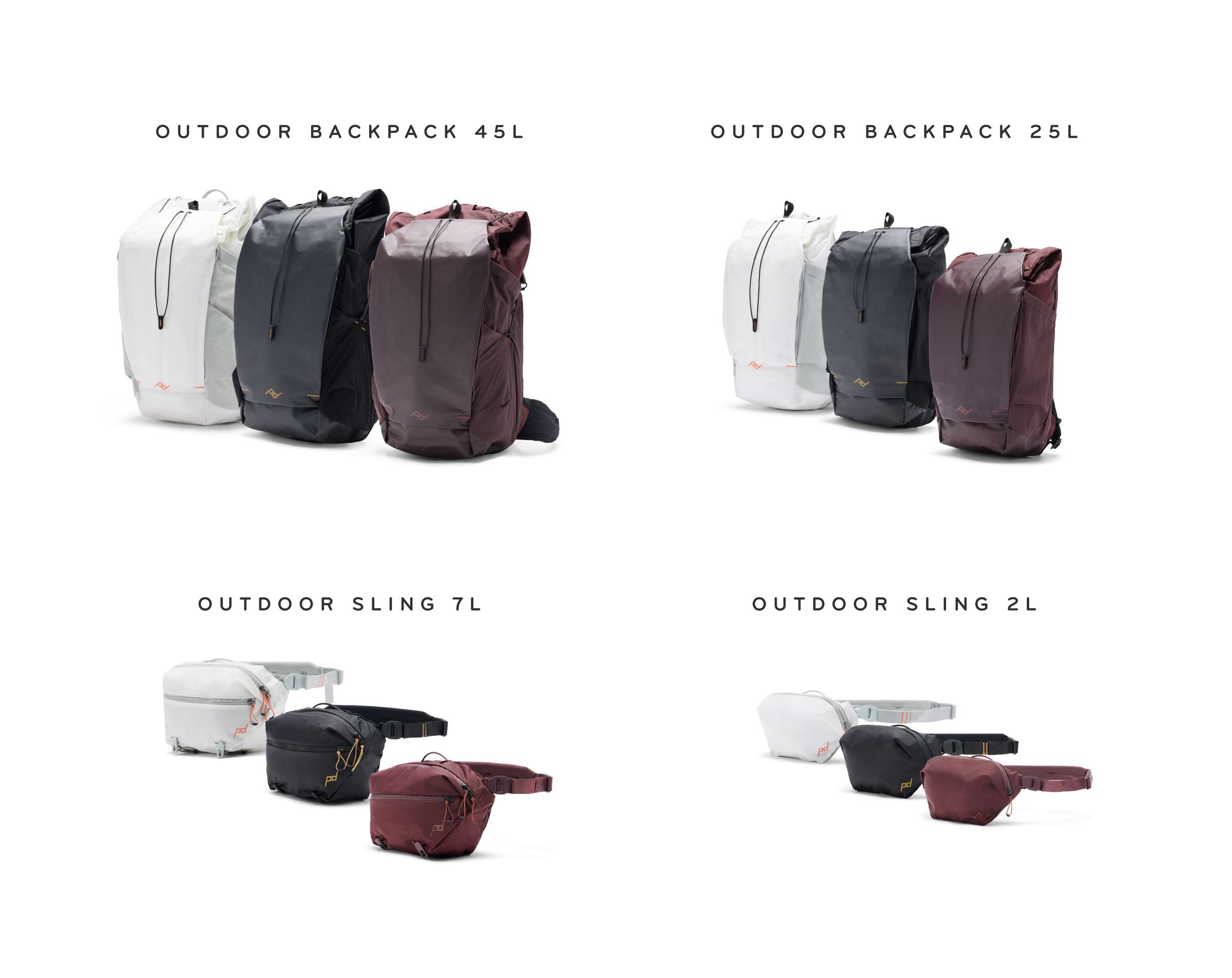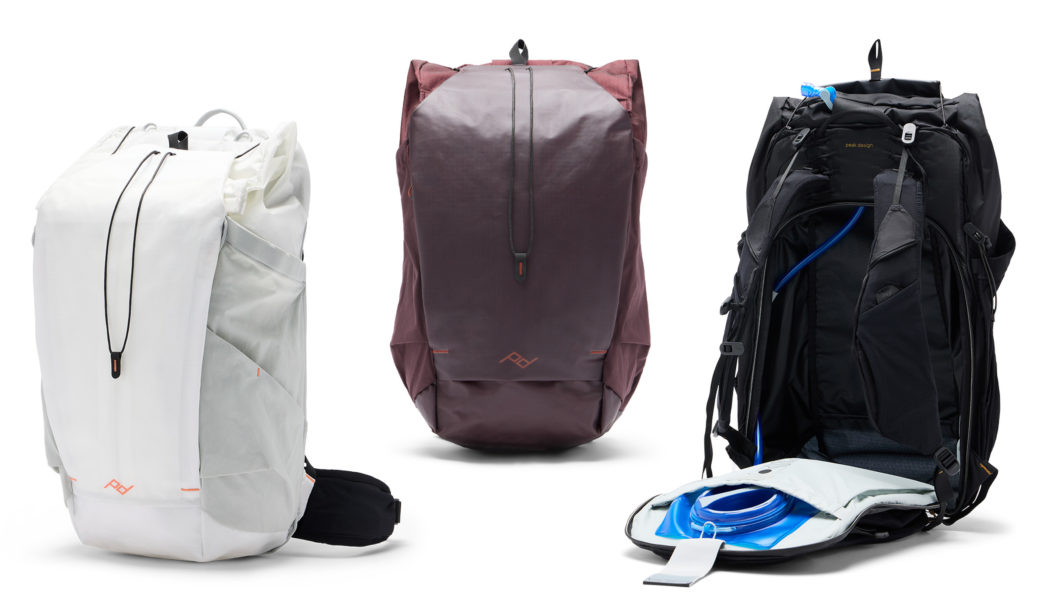The Outdoor line extends the use of our favorite backpacks and slings to places pavement can’t reach.
Share this story
See our ethics statement.

San Francisco-based Peak Design — maker of one of our all-time favorite backpacks — is back with its first new bag lineup in five years. PD says its new Outdoor line of backpacks and slings can be worn together for use beyond the pavement. They feature the company’s “most advanced soft-goods design to date,” with lots of adjustment points for a variety of body types and loads. The new bags are compatible with the company’s modular packing cubes that make it easy to organize and quickly access camera equipment, clothing, and other gear.
“Peak Design has been synonymous with ‘outdoor photography’ yet we still haven’t created true outdoor bags…until now,” says Peak Design founder and CEO Peter Dering in a press release. “The Outdoor Line is not only the culmination of everything we’ve learned as bag designers, it’s also a giant nod to our most loyal and longest-tenured customers.”
The Outdoor Backpack is available as an internally framed 45L (L for liters) model for heavy loads and a smaller 25L version for shorter excursions. Both offer quick-cinch roll-top access from the top as well as the ability to splay the bag almost completely open from the back for easy packing and “total visibility” of your gear. The bags also feature sleeves for laptops and hydration packs (with drinking hose passthrough), slash-proof and “weatherproof” construction (with an optional Rain Fly sold separately), and a promise of “superior comfort and fit with significantly less bulk” compared to other backpacks (including PD’s own bags, I hope). The bags also support several options for external hauling including deep pockets and a cord system for carrying things like tripods, sleeping pads, jackets, and water bottles.


It’s worth noting that the 45L Outdoor Backpack weighs 3.97 pounds (1.8kg) while the 25L model weighs 2.54 pounds (1.15kg). That’s heavy if your primary goal is backpacking through open country where huge 60-liter bags often weigh less than 3 pounds (1.36kg). Still, the 45L Outdoor Backpack is definitely an improvement over Peak Design’s previous flagship, the 3.88 pound (1.76kg) 30L Everyday Backpack.
Besides the internal frame and extra hauling capacity, the 45L bag differs from the 25L bag by shipping with a removable hip belt that’s sold as an add-on for the 25L Outdoor Backpack. Both bags are available in black, “cloud” white, and a purple-ish “eclipse.”
Each backpack is compatible with Peak Design’s camera and packing cubes that come in a variety of sizes and fabric choices that prioritize weight or weather resistance. The camera bags are designed to help haul everything from diminutive mirrorless systems, to multi-accessory drones, on up to full professional rigs. Only the 45L bag is suitable for the largest packing cubes sold by Peak Design.
The Outdoor Slings are available in 7L (weighing 0.74 pounds) and 2L (0.39 pounds) sizes and convert quickly from crossbody to waist bags. The larger 7L bag features stowable gear loops for external storage, and it can also fit PD’s smallest camera cube. Both can be worn on the chest when mounted to the shoulder straps of the Outdoor Backpacks for quick access to your most important gear.
Given Peak Design’s crowdfunding history, it’s unsurprising that the Outdoor line is launching as a Kickstarter exclusive today through October 15th, with a January 2025 targeted ship date. There, you’ll find discounts of 20 to 25 percent off retail pricing, according to PD, before the bags eventually make their way to peakdesign.com, Amazon, and other global retailers as early as late November 2024.
Retail pricing will be as follows:
- Outdoor Backpack 45L: $329.95 (add $29.95 for Rain Fly)
- Outdoor Backpack 25L: $249.95 (add $29.95 for Rain Fly, $44.95 for Hip Belt)
- Outdoor Sling 7L: $89.95
- Outdoor Sling 2L: $59.95
Crowdfunding is a chaotic field by nature. Companies looking for funding tend to make big promises. According to a study run by Kickstarter, roughly 1 in 10 “successful” products that reach their funding goals fail to actually deliver rewards. Of the ones that do deliver, delays, missed deadlines, or overpromised ideas mean that there’s often disappointment in store for those products that do get done.
The best defense is to use your best judgment. Ask yourself: does the product look legitimate? Is the company making outlandish claims? Is there a working prototype? Does the company mention existing plans to manufacture and ship finished products? Has it completed a Kickstarter before? And remember, you’re not necessarily buying a product when you back it on a crowdfunding site.









